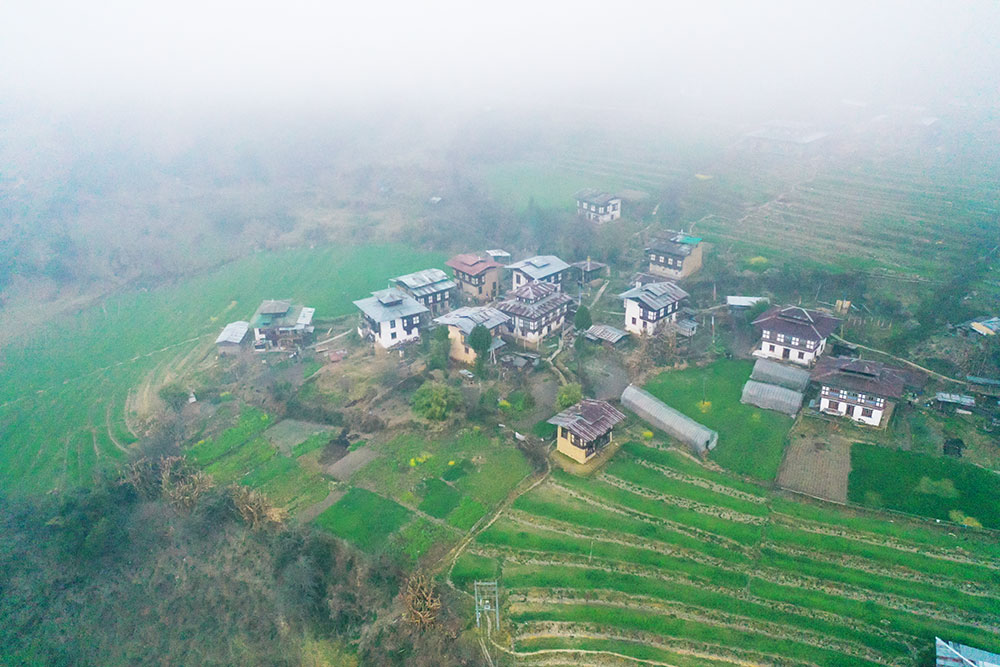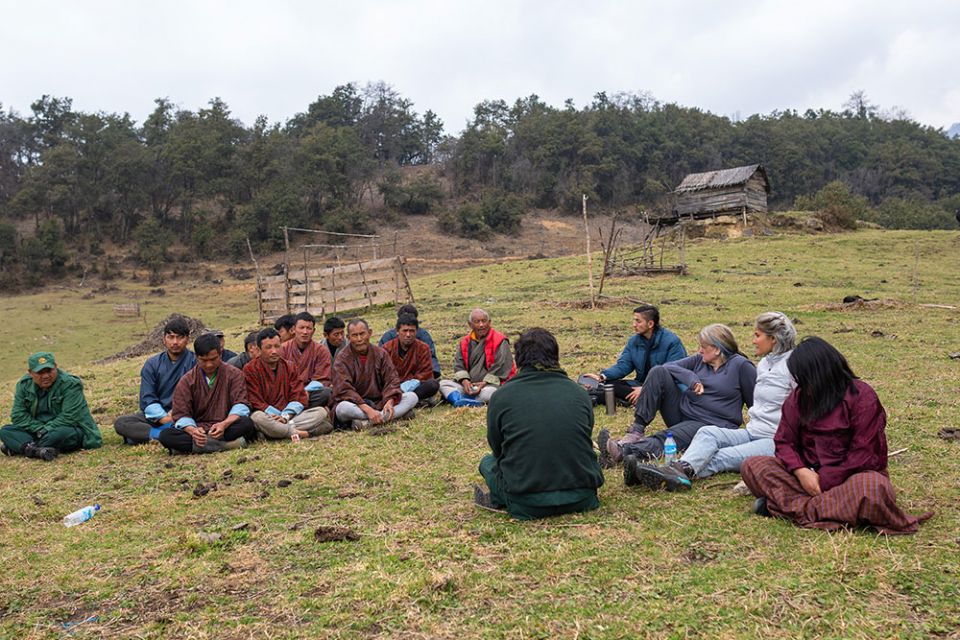
Human-wildlife conflict (HWC) in Nubi Gewog in Trongsa is bound to happen.
In the past five years, from 2020 to 2024, 360 livestock were attacked by tigers in the area.
The government doesn’t give money to farmers for losses caused by human-wildlife conflict, even though it’s a big problem for the farmers.
Penden Lhendup, a 47-year-old farmer from Semji village in Nubi Gewog, said that there have been times when tigers came close to their homes.
“Once, a tiger even came inside our temporary shelter during the day,” he mentioned.
He explained how one of his neighbours was very upset when her milking cow was killed by a tiger a few years ago, and the government didn’t give her any money to make up for the loss.
Between 2020 and 2024, a total of 630 farm animals were killed by wild animals in five gewogs in Trongsa. Among them, 580 cattle were attacked by tigers.
Since the introduction of the Gewog Tiger Conservation Tshogpa (GTCT) scheme in all five gewogs in Trongsa, there has been some relief for the farmers. They now receive a small amount of compensation for their losses.

Each gewog received initial funding of Nu 1 million as seed money for the scheme
The Department of Forest and Park Services set up the GTCT scheme in 2022 across six dzongkhags, covering 11 gewogs. These dzongkhags include all five gewogs in Trongsa, Chumey in Bumthang, Nangkor and Pangkhar in Zhemgang, Dangchu in Wangdue, Goenshari in Phunakha, and Khamaed in Gasa.
The GTCT scheme was established with support from various organisations including WWF, UNDP, Bhutan Foundation, and the Vanishing Treasures Programme.
Each gewog received initial funding of Nu 1 million as seed money for the scheme.
The goal of the GTCT scheme is to tackle and handle human-wildlife conflict, start a livestock insurance plan specifically for tiger-related incidents, reinforce community involvement in development and conservation matters, and guarantee the safety of people, belongings, wildlife, and habitats within the gewog.
In Trongsa, 254 members are enrolled in the GTCT scheme, covering 640 cattle, with 56 members specifically from Nubi Gewog.
Currently, the scheme has compensated for 71 cattle that were killed by tigers.
Each member is required to pay an annual premium of Nu 200 for each cow. In the unfortunate event that a cow is killed by a tiger, the member will receive a nominal compensation of Nu 3,000 for each cow.
To claim compensation, members must update the app, upload a photo of the cow, verify if it was genuinely attacked or killed by a tiger, and provide the location where the incident occurred. Additionally, each registered cow has a tag attached to one of its ears.
Penden Lhendup, a 47-year-old from Semji, mentioned that the process for claiming compensation is quite lengthy for farmers. It involves sending photos and providing detailed locations, which can be time-consuming.
He highlighted that even though the compensation amount is small, farmers still face significant losses. “We don’t receive the true value of our cattle. For example, a milking cow can cost between Nu 60,000 to Nu 70,000,” he explained.
Likewise, Sonam Dorji, a 59-year-old from Jongthang village, pointed out that they only receive compensation for cattle killed by tigers, not by other wild animals. He mentioned that there are instances where their cattle are killed by other wild animals, and conflicts with these animals are common in their village as well.
Sonam Dorji highlighted that there are occasions when they cannot recover the bodies of their cattle after a tiger attack, which makes it difficult to claim compensation. “We keep paying membership fees for two to three years continuously. If our cows aren’t killed, we should get some refund,” he suggested.
Farmers who find the scheme beneficial argue that they can still receive compensation even if they can’t locate the body of the cattle, while others mention they can also sell the meat. However, there are those who believe it’s not advantageous because they can’t locate the body and sell the meat.
Nubi Gup Pema Lhamo suggested that if farmers are willing to pay a higher premium, they could receive higher compensation. “We proposed that if farmers pay a premium of Nu 1000, they could receive compensation of Nu 10,000 each,” Gup explained.
“Some households hesitate to join as members because they don’t receive compensation for cattle killed by other wild animals,” added the Gup.
The Gup also suggested that if the donor agencies could increase the initial funding, they could provide higher compensation to farmers.
Forest officials mentioned that the department had also introduced the Gewog Environment Conversation project to compensate farmers. However, due to sustainability concerns, the project was discontinued.
Nevertheless, farmers who are not members of the GTCT are not reporting wildlife conflicts to officials because they are not receiving any compensation.












